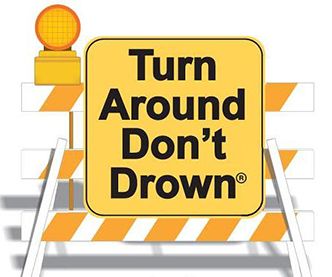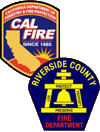FLOOD SAFETY

This information has been reproduced from the National Oceanic and Atmospheric Administration (NOAA) website for Flood Preparedness.
Wildfires and Flooding
Areas devastated by wildfire are extremely susceptible to flooding. Without the natural vegetation rain waters penetrate the soil deeper resulting in the loosening of earth rocks and debris.
Flash Floods
The term ""flash flood"" is usually associated with water rushing through normally dry or low-flow creeks, streams, washes, ravines, or across lower lying ground. In desert areas, torrents of water may move off the sides of mountains for miles and onto flat terrain. This violent rushing of water collects debris and mud as it pushes across the flat terrain.
Flash floods occur within a few minutes or hours of excessive rainfall and normally occur within a few minutes or hours of excessive rainfall. Other causes of flooding include a dam or levee failure, and the sudden release of water held by an ice jam. Flash floods can roll boulders, tear out trees, destroy buildings and bridges, and scour out new channels.
While flood deaths affect all age groups, nearly half of all flash flood fatalities are vehicle-related and the majority of victims are males.
Most flash floods are caused by slow moving thunderstorms, storms that move repeatedly over the same area or heavy rains from tropical storms and hurricanes. These floods can develop within minutes or hours depending on the intensity and duration of the rain, the topography, soil conditions and ground cover.
Commonly, many individuals are unaware of the potential force of water. Just six inches of fast-moving floodwater can knock a person off their feet.
NOAA safety recommendations
The National Oceanic and Atmospheric Administration (NOAA) of the National Weather Service suggests the following safety tips to avoid being caught in a flood:
Monitor the NOAA Weather Radio, or your favorite news source for vital weather related information. If flooding occurs, get to higher ground. Get out of areas subject to flooding. This includes dips, low spots, canyons, washes etc.
Avoid areas already flooded, especially if the water is flowing fast. Do not attempt to cross flowing streams. Road beds may be washed out under flood waters. NEVER drive through flooded roadways.
Do not camp or park your vehicle along streams and washes, particularly during threatening conditions.
Be especially cautious at night when it is harder to recognize flood dangers.
Prepare your property
During a rainstorm, the public can obtain empty sandbags from local fire stations.
If you know that your property is at risk for water damage during upcoming storms, it would be prudent to take steps to mitigate any potential damage that floodwater could cause to your property. Sandbags can also be obtained at local hardware and home improvement stores. Water barriers should be constructed before the water is causing damage.
